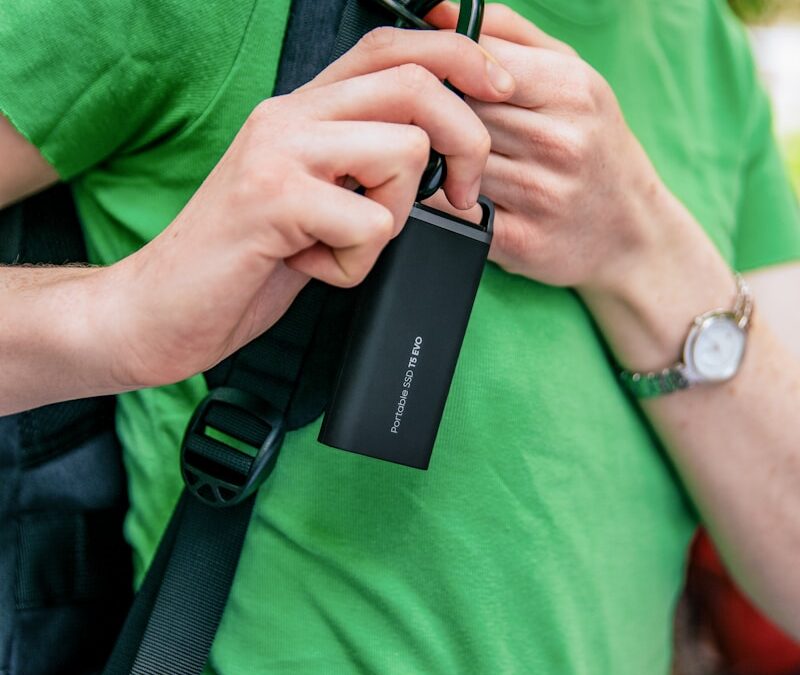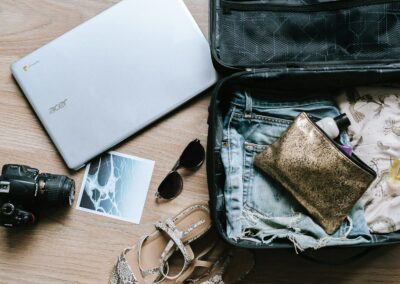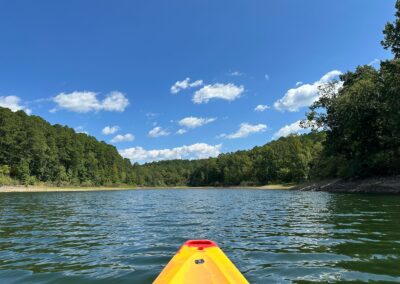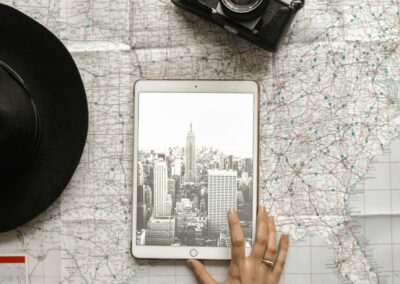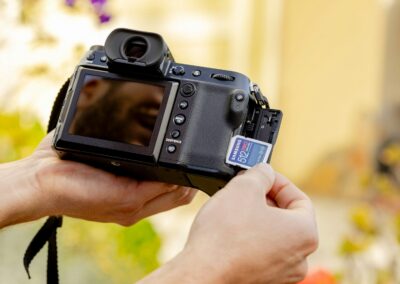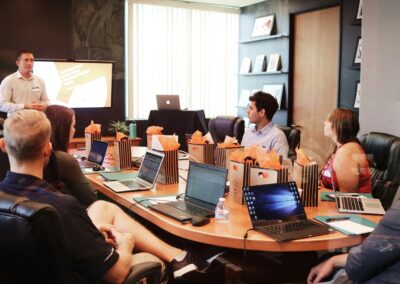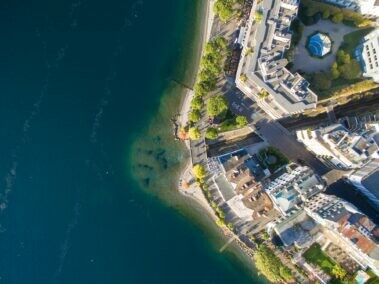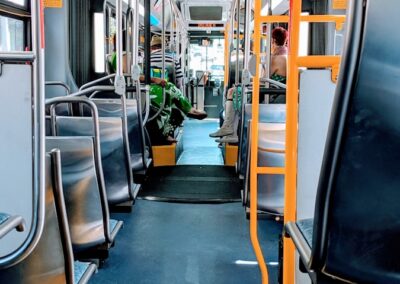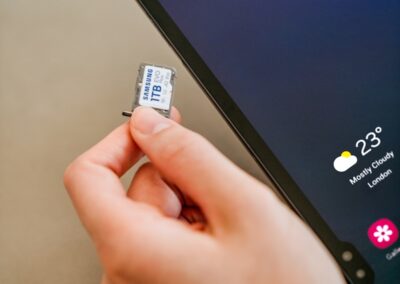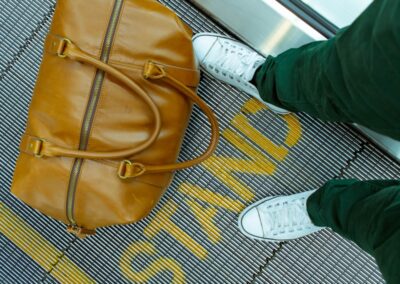Transforming Travel with Augmented Reality
The Importance of AR Travel Guides for Accessibility
In the realm of modern technology, AR travel guides for accessibility represent a significant advancement in making travel more inclusive for people with disabilities. Augmented Reality (AR) can overlay digital information onto the physical world, providing travelers with real-time, interactive guides that enhance their travel experience. For individuals with disabilities, these guides can be particularly transformative, offering tailored information and assistance that addresses their specific needs.
AR travel guides can provide a range of accessibility features, such as visual and auditory information, tactile feedback, and customizable user interfaces. For visually impaired travelers, AR can offer audio descriptions of landmarks, directions, and nearby facilities. For those with hearing impairments, visual cues and text-based information can replace or supplement audio instructions. By catering to different types of disabilities, AR travel guides ensure that everyone can access critical travel information with ease and confidence.
Moreover, the integration of AR in travel guides can enhance the overall travel experience by making it more engaging and interactive. Travelers can explore new destinations through immersive experiences that provide historical context, cultural insights, and real-time navigation. This not only makes travel more enjoyable but also empowers individuals with disabilities to explore the world more independently and confidently.
Key Features of Accessible AR Travel Guides
To create effective AR travel guides for accessibility, several key features must be considered. First and foremost, these guides should offer comprehensive and accurate information tailored to the needs of travelers with disabilities. This includes detailed descriptions of accessible routes, entrances, restrooms, and services available at various destinations. Providing such information in multiple formats (audio, visual, and text) ensures that it is accessible to all users, regardless of their specific disability.
Another essential feature is real-time navigation assistance. AR travel guides can use GPS and other location-based technologies to provide step-by-step directions, highlight accessible paths, and alert users to potential obstacles or barriers. This feature can significantly enhance the mobility and independence of travelers with disabilities, allowing them to navigate unfamiliar environments with greater ease and confidence.
Personalization is also crucial. AR travel guides should allow users to customize their experience based on their individual needs and preferences. This could involve adjusting the size and color of text, selecting preferred languages, or choosing between different modes of information delivery (e.g., audio versus text). Personalization ensures that the guide is not only accessible but also user-friendly, catering to the unique requirements of each traveler.
Case Studies: Successful Implementation of AR Travel Guides
Several successful implementations of AR travel guides for accessibility highlight the potential of this technology to transform travel for people with disabilities. One notable example is the “Accessible Cities” project in Dubai, which uses AR to provide real-time information about accessible facilities and services throughout the city. The project includes interactive maps, audio guides, and visual cues to help travelers with disabilities navigate the city more easily.
Another example is the “Smart Travel” initiative in Riyadh, which leverages AR to enhance the accessibility of public transportation. The initiative provides AR-based navigation aids, real-time updates on service availability, and information about accessible stations and vehicles. By making public transport more accessible, the initiative promotes greater mobility and independence for travelers with disabilities.
In the UAE, the “Inclusive Tourism” project uses AR to create immersive travel experiences for people with disabilities. The project offers virtual tours of tourist attractions, complete with audio descriptions, visual aids, and interactive elements. These virtual tours allow travelers to explore destinations in advance, plan their trips more effectively, and gain confidence in their ability to navigate new environments.
Best Practices for Developing Accessible AR Travel Guides
Developing effective AR travel guides for accessibility involves adhering to several best practices. First, it is essential to involve users with disabilities in the design and testing process. By gathering feedback from actual users, developers can ensure that the guides meet the specific needs and preferences of their target audience. This user-centered approach enhances the usability and effectiveness of the final product.
Second, collaboration with local authorities and organizations is crucial. Working with government agencies, tourism boards, and disability advocacy groups can provide valuable insights and resources for developing comprehensive and accurate AR travel guides. These partnerships can also help promote the guides and ensure they are widely accessible to travelers.
Third, ongoing updates and maintenance are vital. Travel environments and accessibility features can change over time, so it is important to keep AR travel guides up to date with the latest information. Regular updates ensure that travelers always have access to accurate and reliable information, enhancing their overall travel experience.
Conclusion: The Future of Accessible Travel with AR
AR travel guides for accessibility represent a promising advancement in making travel more inclusive and enjoyable for people with disabilities. By leveraging the power of augmented reality, these guides can provide real-time, interactive information that enhances mobility, independence, and confidence for travelers. As technology continues to evolve, the potential for AR to transform accessible travel will only grow, offering new opportunities for innovation and improvement.
Embracing these advancements and prioritizing inclusivity in travel technology will be key to ensuring that everyone, regardless of their abilities, can explore the world with ease and confidence. By developing and implementing accessible AR travel guides, we can create a more inclusive and connected global community, where the joys of travel are accessible to all.
—
#ARTravelGuidesForAccessibility #AugmentedRealityTravel #AccessibleTravelInformation #ModernTechnology #BusinessSuccess #LeadershipAndManagementSkills #GenerativeArtificialIntelligence #SaudiArabia #UAE #Dubai #Riyadh

